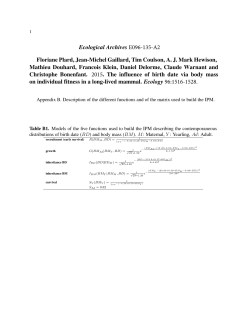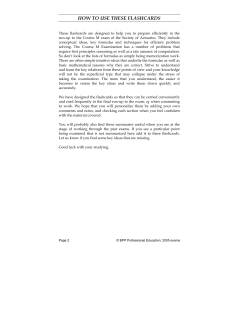
EXEMPLAR FOR LOW EXCELLENCE
EXEMPLAR FOR LOW EXCELLENCE NOTE: These exemplars do not fully show Grade Score Marking (GSM) because of the small sample of student scripts involved, and the absence of a cut score meeting to determine grade boundaries. GSM can be seen in the level 1 and level 2 exemplars from the 2012 examinations, which will be published on the NZQA website when the assessment schedules are published. Explains parasitic relationship, but not clearly how this results in better survival, nor other resources that are parasitised. Effect on crop production is marginally explained. Should include effect of less energy on reproduction growth. Viable reason (redevelopment of sites) not clearly linked to reduction in migration numbers, so Achieved. Comprehensive coverage of advantages, plus consequences. Links migration to map. Does not clearly explain the role of the moon as resetting or triggering the biological clock. Explains both advantages and costs, but does not justify the strategy. EXEMPLAR FOR HIGH EXCELLENCE NOTE: These exemplars do not fully show Grade Score Marking (GSM) because of the small sample of student scripts involved, and the absence of a cut score meeting to determine grade boundaries. GSM can be seen in the level 1 and level 2 exemplars from the 2012 examinations, which will be published on the NZQA website when the assessment schedules are published. Explains survival in low N soils but vague on other ‘resources’ and how that affects survival. Explains long-term effects in terms of the build up of striga seeds and subsequent crop production decrease. Explains how dormancy affects survival with clear links to striga’s parasitism. Comprehensive explanation of biology of control, Marginal coverage of navigation – links to map with magnetic poles (one end of earth to another). Clear linking of advantages and consequences of migration. Coverage not comprehensive – only one reason justified. Survival advantages and costs covered, and overall effectiveness of strategy is justified.
© Copyright 2025










![Chapter 3 Homework Review Questions Lesson 3.1 [pp. 78 85]](http://cdn1.abcdocz.com/store/data/000248451_1-668327adcad67c478c93f46227ffd100-250x500.png)










